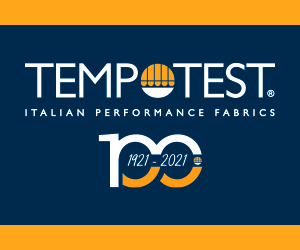Flexibility in CAD Systems Key to Innovation and Creativity
August 13, 2002
This is an opinion piece submitted by Bethanne Knudson, director of training and technical support for JacqCAD MASTER® software.
When people talk about CAD, sometimes they forget that "Aided" is CAD's middle name. CAD, of course, stands for Computer Aided Design. But, CAD systems can evolve toward "Automation," which replaces "Aid" and overemphasizes "Computer." When CAD moves toward automation, the guiding principle becomes allowing an operator to do more with fewer keystrokes or mouse clicks.
Although CAD users appreciate the automation, fabric designers become more removed from the product. The tension between the desire for more automation and the need to allow precise control is especially strong in jacquard design. So let's look for another direction in which CAD systems can go.
CAD systems can continue to focus on pixelizing or digitizing art originally produced in an analog medium. Or, CAD systems development can focus on becoming the means of design and creation.
The unique characteristics of jacquard fabrics, produced by the structural interlacing of yarn elements, cannot be duplicated in a print or in a fabric simulation using CAD. The three-dimensional reality of the interlacing, the qualities of the particular yarns, and the finishing process impose a great influence on the results, making it impossible to replicate the jacquard in the two-dimensional space of paper or computer monitors. Designers must respond to the results of the actual woven fabric - tweaking, perfecting, and often pinpointing a single interlacing position for correction. These are precisely the skills that CAD cannot replace. These skills cannot be automated because they depend on the knowledge, experience, and judgment of the designer, who has to take into account the type and the appropriate parameters of the product.
In applying CAD to jacquard, flexibility in what one can do at each step becomes a more important ingredient than the reduction of keystrokes. The driving principle is to let the computer do the drudge work and allow the designer to do the creative work. Flexibility is the key to innovation and creativity, because flexibility means designers can pick and choose what steps to automate. Thus, the designer can quickly automate the technical end of making a loom-ready file, but still retain design control over every parameter. The creative jacquard designer, like a culinary expert, does not rely on a prescribed formula or recipe. Instead, the expertise of the creator demands the ability to combine things in a way that may never have been done before. No matter how well crafted the recipe, if everyone is following the same directions, the results will have little, if any, originality. Among some designers, automation can also lead to a lack of understanding of what the individual steps are. Ideally, any CAD system should be designed to explicitly recognize the steps, though not necessarily to make the designer go through all of them.
When people talk about CAD, sometimes they forget that "Aided" is CAD's middle name. CAD, of course, stands for Computer Aided Design. But, CAD systems can evolve toward "Automation," which replaces "Aid" and overemphasizes "Computer." When CAD moves toward automation, the guiding principle becomes allowing an operator to do more with fewer keystrokes or mouse clicks.
Although CAD users appreciate the automation, fabric designers become more removed from the product. The tension between the desire for more automation and the need to allow precise control is especially strong in jacquard design. So let's look for another direction in which CAD systems can go.
CAD systems can continue to focus on pixelizing or digitizing art originally produced in an analog medium. Or, CAD systems development can focus on becoming the means of design and creation.
The unique characteristics of jacquard fabrics, produced by the structural interlacing of yarn elements, cannot be duplicated in a print or in a fabric simulation using CAD. The three-dimensional reality of the interlacing, the qualities of the particular yarns, and the finishing process impose a great influence on the results, making it impossible to replicate the jacquard in the two-dimensional space of paper or computer monitors. Designers must respond to the results of the actual woven fabric - tweaking, perfecting, and often pinpointing a single interlacing position for correction. These are precisely the skills that CAD cannot replace. These skills cannot be automated because they depend on the knowledge, experience, and judgment of the designer, who has to take into account the type and the appropriate parameters of the product.
In applying CAD to jacquard, flexibility in what one can do at each step becomes a more important ingredient than the reduction of keystrokes. The driving principle is to let the computer do the drudge work and allow the designer to do the creative work. Flexibility is the key to innovation and creativity, because flexibility means designers can pick and choose what steps to automate. Thus, the designer can quickly automate the technical end of making a loom-ready file, but still retain design control over every parameter. The creative jacquard designer, like a culinary expert, does not rely on a prescribed formula or recipe. Instead, the expertise of the creator demands the ability to combine things in a way that may never have been done before. No matter how well crafted the recipe, if everyone is following the same directions, the results will have little, if any, originality. Among some designers, automation can also lead to a lack of understanding of what the individual steps are. Ideally, any CAD system should be designed to explicitly recognize the steps, though not necessarily to make the designer go through all of them.
















